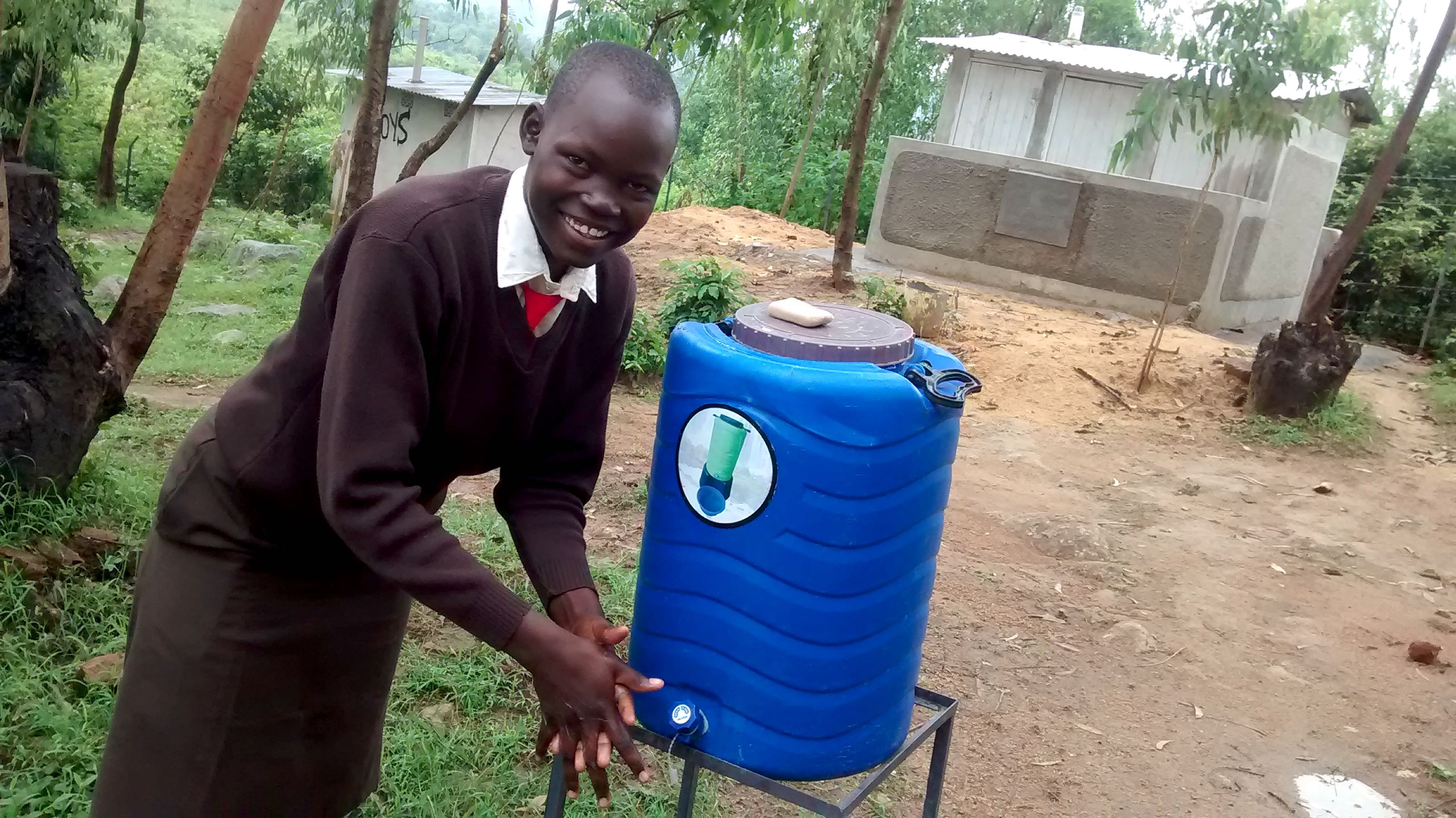A day at Lihanda Secondary School goes from 8am to 4pm. Administrators attend to daily management issues, as the groundsmen liaise with the cooks to check if there is water in the kitchen. If the answer is "no," he will inform the administration about it. Administration officials then make the decision to either buy water or send students out to Odera Spring.
The school has several large boulders on its ground which are sometimes broken down and used for construction projects. There are also two fish ponds stocked with tilapia which are sold when fully grown.
A total of 197 students attend the school, of which 101 are boys and 96 are girls. The school employs 10 teachers and six support staff.
Water
Most of the water used at Lihanda Secondary School comes from Odera Spring, which is unprotected and open to contamination. Though it's fit with a discharge pipe, the area behind it is aboveground and gets all sorts of dirt, garbage, and feces washed in - especially when it rains. Odera Spring is the nearest, most popular water source. It is often used, regardless of whether the school sends it students out for water or hires people to ferry it. All the water fetched here is either kept in the same containers or poured into a larger plastic tank.
Students told us that they encounter more than dirty water at Odera Spring, but they have the most trouble with the community. They say that fights break out because the community members see it as their water source and believe the students don't have a right to use it whenever they want.
The school drains its accounts, students waste class time, and the health of all suffers because of this situation.
Joan Amani has been on the school board for a while, witnessing what a clean water shortage does to these students. She says that there hasn't been a "case of disease on a large scale to raise an alarm, but we are quite predisposed because of the water shortages affecting the community."
"Buying water from unknown sources has also compounded this problem more, especially during the dry season," she continues. "Students register increased cases of diarrhea and other stomach issues during such times."
Sanitation
There are six pit latrines, but they are almost full. Though the pits desperately need to be cleared, the school is doing their best to keep the floors clean. There one handwashing station but it doesn't have any soap.
Here’s what we’re going to do about it:
Training
Training will be held for two days. The facilitator will use PHAST (participatory hygiene and sanitation transformation), ABCD (asset-based community development), CTC (child to child), lectures, group discussions, and handouts to teach health topics and ways to promote good practices within the school. The CTC method will prepare students to lead other students into healthy habits, as well as kickstart a CTC club for the school.
Handwashing Stations
The CTC club will oversee the new facilities, such as handwashing stations, and make sure they are kept clean and in working condition. The two handwashing stations will be delivered to the school, and the club will fill them with water on a daily basis and make sure there is always a cleaning agent such as soap or ash.
VIP Latrines
Two triple-door latrines will be constructed with local materials that the school will help gather. Three doors will serve the girls while the other three serve the boys. And with a new source of water on school grounds, students and staff should have enough to keep these new latrines clean.
Rainwater Catchment Tank
A 50,000-liter rainwater catchment tank will help alleviate the water crisis at this school. The school will also help gather the needed materials such as sand, rocks, and water from the spring for mixing cement. Once finished, this tank can begin catching rainfall that will be used by the school’s students and staff. Students will no longer be responsible to find enough water to carry to school every day, nor leave class again to find more.
We and the school strongly believe that with this assistance, standards will significantly improve. With clean water and high standards of cleanliness, students' good health will give them the chance to earn better grades and live a better life.
This project is a part of our shared program with Western Water And Sanitation Forum (WEWASAFO). Our team is pleased to provide the reports for this project (edited for readability) thanks to the hard work of our friends in Kenya.

 Rainwater Catchment
Rainwater Catchment
 Rehabilitation Project
Rehabilitation Project

































